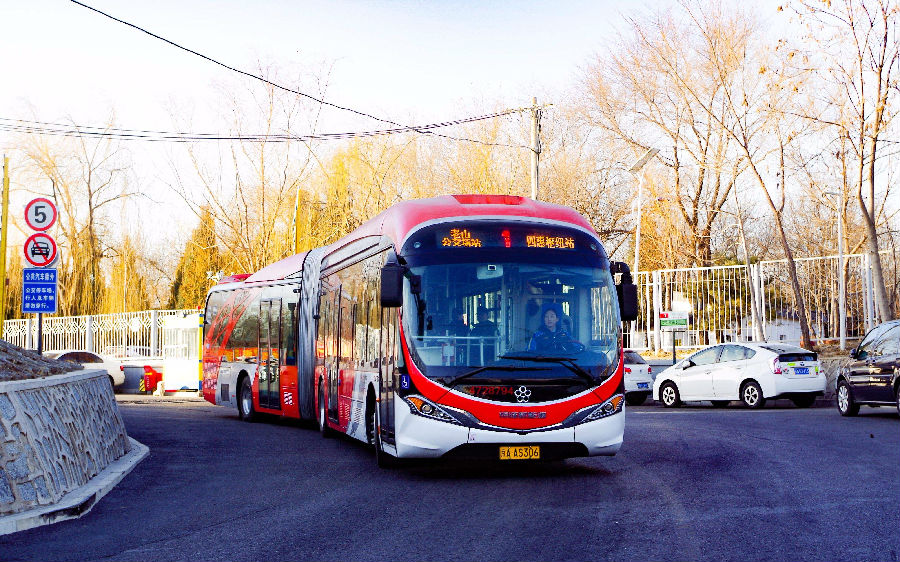The number 1 bus line on Beijing's Chang'an Avenue was one of the first bus routes to be established in the city after the founding of New China.
Chang Hongxia is the head of the group of bus drivers who work on route number 1.
"In the past, China's buses were dependent on foreign imports and truck modifications. Our bus lines only ran through the center of Beijing. But now, we have our own domestic buses that can run through the Beijing-Tianjin-Hebei region, and even in villages in the mountainous regions. We used to pay for our bus tickets using paper tickets and IC cards, but now we can simply use our phones to scan to buy a ticket."
Compared with urban transportation, rural transportation has experienced even bigger changes.
Zeng Yun is a road maintenance worker in Jiang'an County in Sichuan Province.
"The roads at that time were mostly mud. People usually walked to work. We seldom saw people bike to work. Road maintenance work was very difficult, because the maintenance workers can only transfer heavy materials on their shoulders. With China's reform and opening up and the growing economy, we re-built the roads, and turned them into cement and asphalt roads. After these roads were fixed, the maintenance work became much easier."
Zeng Yun said that around 300 kilometers of new roads are constructed in Jiang'an County every year.
There are now bus services in 85 percent of the villages in the county, and the new roads make it even easier for local residents to travel.

China's water transportation has also developed very rapidly.
Jiang Long is the captain of Sea Patrol Number 1, which is China's biggest and most advanced maritime ship. It's been responsible for carrying out a lot of rescue missions.
"China wasn't able to build a 10,000-ton freighter until 1960. But now the biggest freighter in the world was made in China. It can ship over 21,000 TEU containers around the world. In the early days after the founding of New China, fewer than 10 patrol boats were qualified to perform safety supervision. Now the number is around 900."
Official stats show that by the end of 2018, the total railway operation mileage reached 131,000 kilometers in China, five times higher than 1949, while the high-speed railway exceeded 29,000 kilometers, accounting for more than 60 percent of the world's total.
The total length of highways reached nearly 4.9 million kilometers, 59 times as much as the country had in 1949.
Inland waterways have expanded to 127,000 kilometers in mileage, while civil aviation flight routes surged over 700 times from 1950, to over 8 million kilometers in 2018.
The country also boasts 235 civil airports.
For CRI, I'm Xiao Yi.












